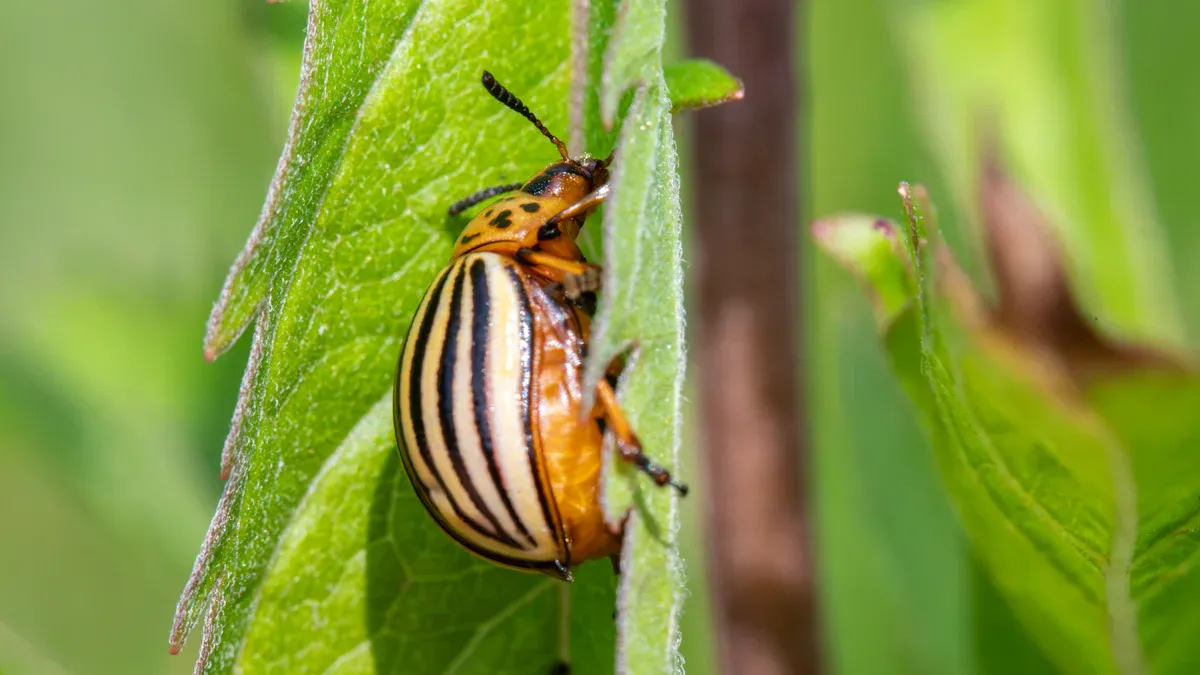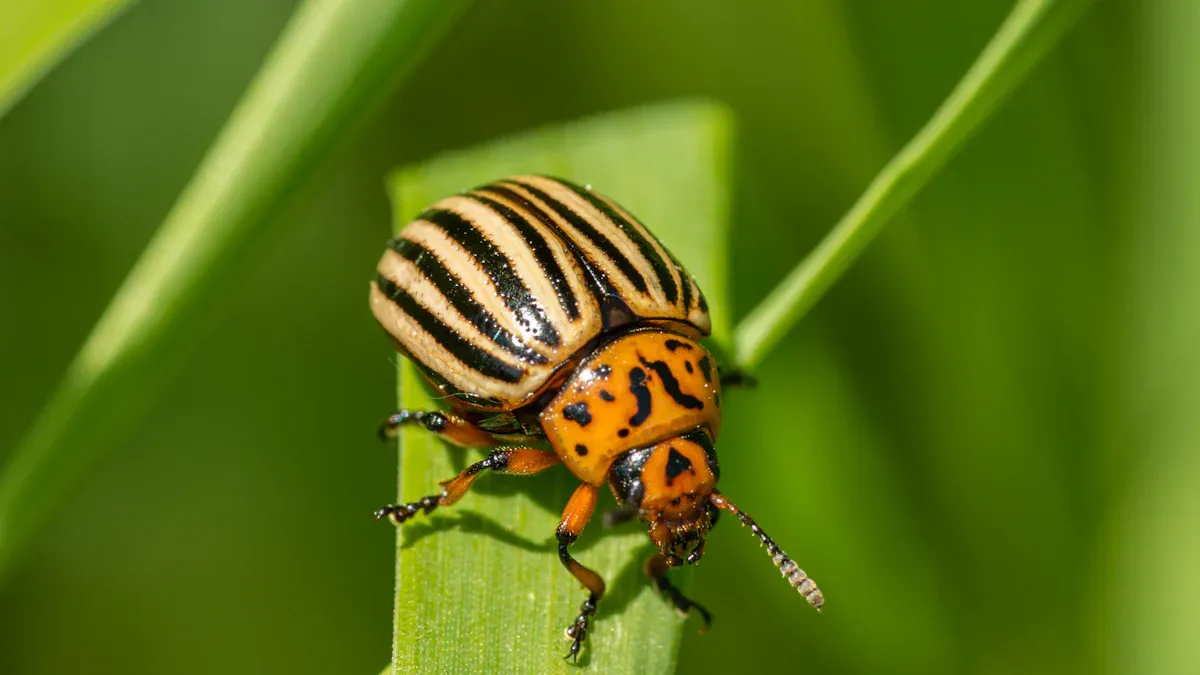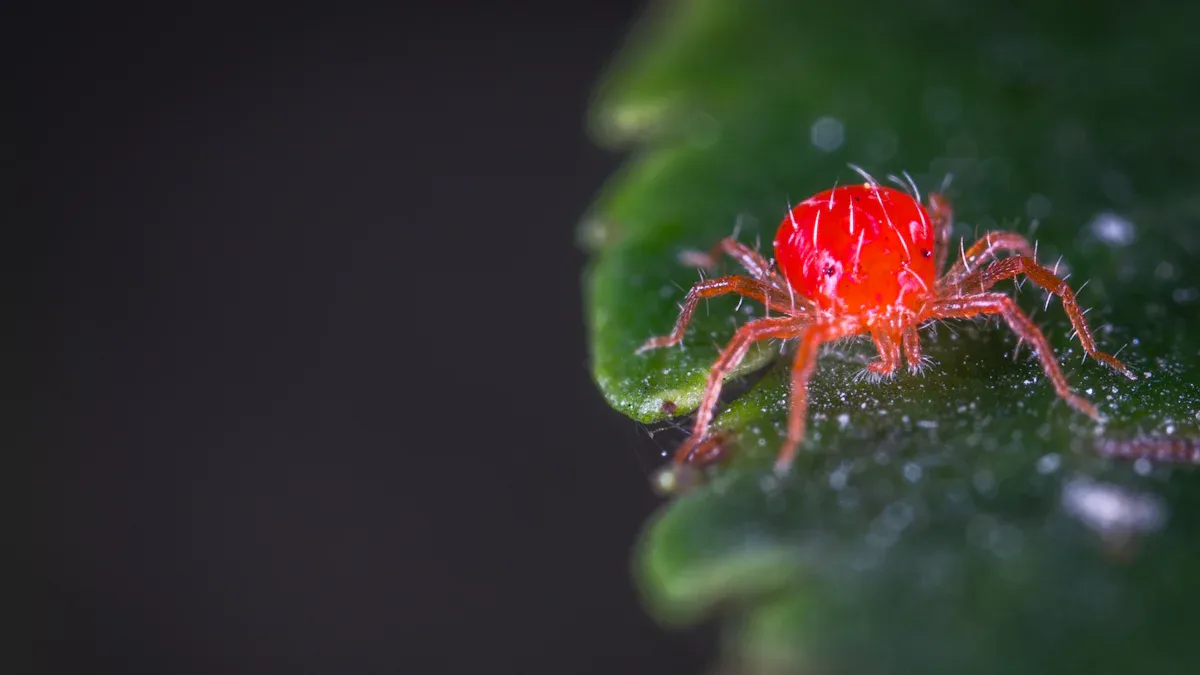
Recognizing potato plant pests early is crucial for protecting your crop. Common signs of pest infestations include visible excrement and small entrance holes in the leaves and tubers. You may notice pink discoloration around these holes a few days after pests invade. Caterpillars can enter tubers through soil cracks, leaving cavities filled with waste. By taking proactive measures for pest management, you can ensure better plant health and a more fruitful harvest.
Key Takeaways
Early identification of potato pests is crucial. Look for signs like holes in leaves and discoloration to catch infestations before they worsen.
Common pests include the Colorado potato beetle and aphids. Each pest has unique symptoms that can significantly harm your potato plants.
Implement integrated pest management (IPM) strategies. Use a combination of monitoring, crop rotation, and biocontrol methods to manage pest populations effectively.
Regularly inspect your plants for signs of pests. Early detection allows for timely action, ensuring healthier plants and better yields.
Consider both chemical and non-chemical treatment options. This approach helps manage resistance and protects beneficial insects in your garden.
Overview of Potato Pests
Identifying potato plant pests early is essential for maintaining healthy crops. These pests can be categorized into two main groups: leaf-feeding pests and sap-sucking pests. Each group poses unique threats to your potato plants.
Leaf-Feeding Pests
Leaf-feeding pests primarily damage the foliage of potato plants. They consume leaves, which can lead to significant yield loss. Common leaf-feeding pests include:
Colorado potato beetle
Potato tuber moth
Leafminer fly
These pests often leave behind visible symptoms. For instance, you may notice stripped leaves or holes in the foliage. The Colorado potato beetle, in particular, has a distinctive yellow and black striped body. This pest can quickly defoliate your plants, leading to stunted growth and reduced yields.
Pest Name | Identification Features |
|---|---|
Colorado Potato Beetle | Strips leaves from potato plants, recognizable by its yellow and black striped body. |
Leaf-feeding pests can disrupt the plant’s ability to photosynthesize. This disruption leads to yellowing at the leaf tips and, in severe cases, leaf curling and death. The damage worsens during drought conditions, ultimately reducing crop yield and quality.
Sap-Sucking Pests
Sap-sucking pests extract vital nutrients from potato plants. They can weaken plants and cause various symptoms. Common sap-sucking pests include:
Aphids
Whiteflies
Leafhoppers
These pests can cause distorted, curled, or deformed leaves, leading to stunted growth. Aphids, for example, are notorious for their rapid reproduction and can quickly infest your plants.
Impact on Photosynthesis | Measurement | Time After Feeding |
|---|---|---|
Reduction in ΦPSII | 8% | 20 minutes |
Reduction in ΦPSII | 46% | 90 minutes |
Monitoring your potato plants for these pests is crucial. Early detection allows you to take action before they cause severe damage. By understanding the symptoms and identifying the pests, you can protect your crop and ensure a healthy harvest.
Colorado Potato Beetle

The Colorado potato beetle is a significant threat to your potato plants. Recognizing this pest early can save your crop from severe damage. Here are the key identification features of the Colorado potato beetle at different life stages:
Life Stage | Physical Characteristics |
|---|---|
Adults | Oval shape, 3/8 inch long, yellow-orange prothorax, yellowish-white wing covers with 10 narrow black stripes. |
Eggs | Bright yellowish-orange oval eggs laid in clusters on the underside of leaves, turning dark red before hatching. |
Larvae | Young larvae are brick red with black heads; older larvae are pink to salmon colored with black heads, featuring two rows of dark spots on each side. |
You can spot adults easily due to their distinctive stripes. The eggs are often found on the undersides of leaves, making them less visible. Larvae can cause significant damage as they feed voraciously on the foliage.
The economic impact of Colorado potato beetle infestations is substantial. In Michigan, the total costs of insecticide and crop losses reached $13.3 million in 1994, accounting for 13.7% of the total value of the potato crop. Yield reductions can range from 20-100% due to their feeding habits.
To control the Colorado potato beetle effectively, you can use both chemical and non-chemical treatment methods:
Chemical Treatments:
Neonicotinoids like imidacloprid and thiamethoxam are commonly used. These insecticides are applied at planting to control beetles for several weeks.
Foliar sprays with various insecticides can help manage beetle populations.
Non-Chemical Treatments:
RNA interference involves the consumption of dsRNA by the beetles, leading to cessation of feeding and eventual death.
Plant hormone elicitors, such as jasmonic acid and salicylic acid, can influence pest behavior and reduce resistance.
Be aware that resistance to common insecticides has increased in Colorado potato beetle populations over the past decade. This resistance has led to a decline in the effectiveness of neonicotinoids. Therefore, it is essential to implement resistance management strategies to prolong the efficacy of available insecticides.
By monitoring your potato plants and applying these treatment methods, you can protect your crop from the damaging effects of the Colorado potato beetle.
Aphids

Aphids are among the most destructive potato plant pests. Recognizing them early can help you protect your crop from significant damage. Here are some key identification features of aphids:
Feature | Description |
|---|---|
Size | Larger than green peach aphids, about an eighth of an inch in length. |
Color Variations | Can be green, pink, yellow, or black. |
Distinguishing Characteristics | Winged adults lack black markings on their back; they have pear-shaped bodies and long antennae. |
Distribution | Scattered throughout infested plants, colonies consist of adults and offspring closely clustered together. |
You may notice aphids clustered on the undersides of leaves or along stems. Their presence can lead to several symptoms in your potato plants. Aphids feed on the plant’s phloem tissue, removing essential nutrients like water, ions, and sucrose. This feeding behavior results in:
Stunting, yellowing, and distortion of plant structures.
Reduced plant vigor and yield.
The transmission of viruses, which can cause severe symptoms in potato foliage and tubers.
The overall loss of plant health can lead to decreased productivity, especially in young plants. Aphids are notorious for spreading plant viruses, which can dramatically decrease crop yield and even kill plants.
To manage aphid populations effectively, you can use both biological and chemical control methods:
Biological Control:
Introduce natural predators like ladybugs, which are effective against aphids.
Use Beauveria bassiana, a natural pest control agent. This entomopathogenic fungus enters aphids through contact with fungal spores, leading to a noticeable decrease in their populations.
Chemical Control:
Consider using insecticides such as Flupyradifurone, Dinotefuran, or Pymetrozine. Here’s a summary of their effectiveness:
Insecticide | Application Rate (g/ha) | Efficiency on Day 3 (%) | Efficiency on Day 7 (%) | Crop Preservation (c/ha) |
|---|---|---|---|---|
Flupyradifurone | 1000 | 78 | 95.6 | 20.6 |
Dinotefuran | N/A | 73 | 90 | N/A |
Pymetrozine | 300 | N/A | N/A | N/A |
Using these methods can help you maintain healthy potato plants and prevent the damaging effects of aphids.
Cutworms
Cutworms pose a significant threat to young potato plants. These pests can cause severe damage, especially during the early growing season when seedlings are most vulnerable. Identifying cutworms early can help you take action before they inflict serious harm.
Identification Features
You can recognize cutworms by their distinct characteristics:
Feature | Description |
|---|---|
Size | About two inches when fully grown. |
Shape | Curl into a tight ‘C’ shape when disturbed. |
Color | Range from brown, tan, pink, green, gray, to black; some are spotted or striped. |
Texture | Smooth with very few hairs; some appear glossy while others are dull. |
Cutworms primarily feed on the stems and roots of young potato plants. They can cut off and kill newly germinated seedlings and small plants. Additionally, they burrow into the soil at night, potentially damaging tubers close to the surface. You may notice more damage in dry conditions due to soil cracks.
Impact on Young Plants
The impact of cutworms on young potato plants can be severe:
Cutworms feed on the stems and roots, causing significant damage or death.
They are most active during the early growing season, making young seedlings particularly vulnerable.
Preventative measures include avoiding early plantings to reduce the risk of cutworm damage.
Effective Treatment Methods
To control cutworm populations effectively, consider these integrated pest management strategies:
Strategy Type | Description |
|---|---|
Cultural | Remove winter weeds to reduce overwintering habitat. |
Mechanical | Monitor plants for damage and disturb the soil to uncover cutworms. Use barriers around plants. |
Biological | Utilize natural enemies like predaceous beetles and wasps to regulate populations. |
Chemical | Apply pesticides in the evening targeting stems and foliage. |
Organic options | Use Spinosad and Bt var. kurstaki to reduce larvae populations. |
When using chemical treatments, avoid applying insecticides preventatively. Instead, scout your fields diligently for signs of cutworm damage. Spot treatments can save costs if damage is localized. Seed treatments with a Bt trait can prevent larvae feeding, while foliar insecticides like pyrethroids and organophosphates can be effective when economic thresholds are reached.
By monitoring your potato plants and implementing these strategies, you can protect your crop from the damaging effects of cutworms.
Blister Beetles
Blister beetles can pose a serious threat to your potato plants. Recognizing them early helps you take action before they cause significant damage. Here are some key identification features of blister beetles:
Feature | Description |
|---|---|
Size | Typically range from 0.5 to 1 inch long. |
Color | Often black, gray, or striped with yellow or orange. |
Distinguishing Characteristics | Soft-bodied and elongated, with a noticeable neck between the head and body. |
Blister beetles feed on potato leaves, leading to a ragged appearance. You may notice that the leaves look chewed or have holes. In severe cases, they can cause complete defoliation in affected areas. However, significant total damage is rare due to their clumped distribution in fields. This means that while they can cause localized damage, they do not usually affect entire crops.
To manage blister beetles effectively, consider these treatment methods:
Cultural Control:
Remove weeds and debris from your garden. This reduces habitats for blister beetles.
Rotate your crops to disrupt their life cycle.
Mechanical Control:
Handpick beetles from your plants. This method works well for small infestations.
Use traps to catch beetles before they can damage your plants.
Chemical Control:
If infestations are severe, consider using insecticides. Apply them according to the manufacturer’s instructions.
Focus on products that target beetles specifically to minimize harm to beneficial insects.
By monitoring your potato plants and implementing these strategies, you can protect your crop from the damaging effects of blister beetles. Regular checks will help you catch any symptoms early, ensuring a healthy harvest.
In summary, recognizing potato plant pests early is vital for maintaining healthy plants. You learned about various pests, including the Colorado potato beetle, aphids, cutworms, and blister beetles. Each pest presents unique symptoms that can harm your crop. Implementing effective treatment methods, such as integrated pest management (IPM), can significantly improve your potato yield.
Consider these best practices for pest control:
Monitor your plants regularly for signs of infestation.
Rotate crops to disrupt pest life cycles.
Use biocontrol methods to manage pest populations.
By taking these proactive steps, you can ensure your potato plants thrive and produce a bountiful harvest.


